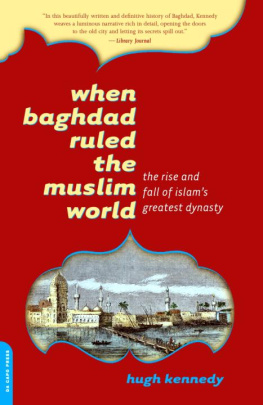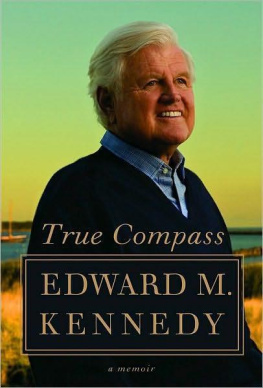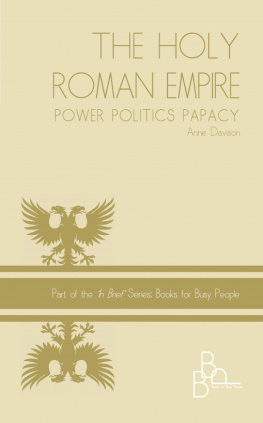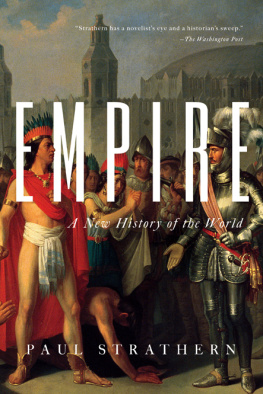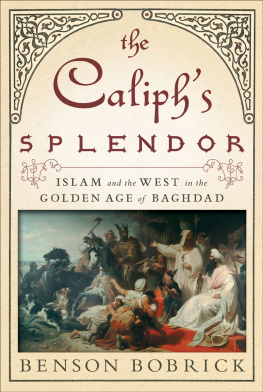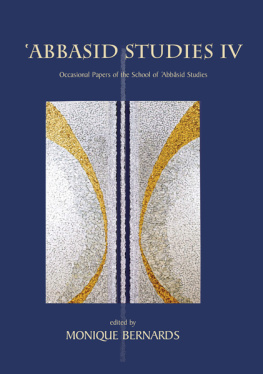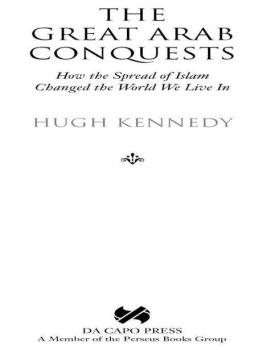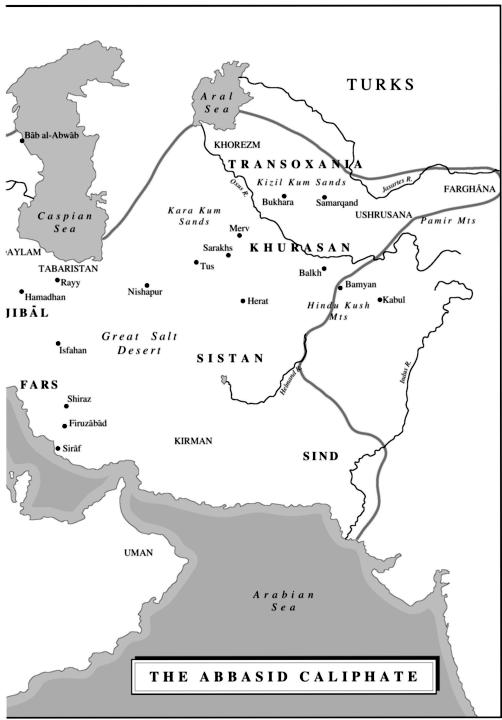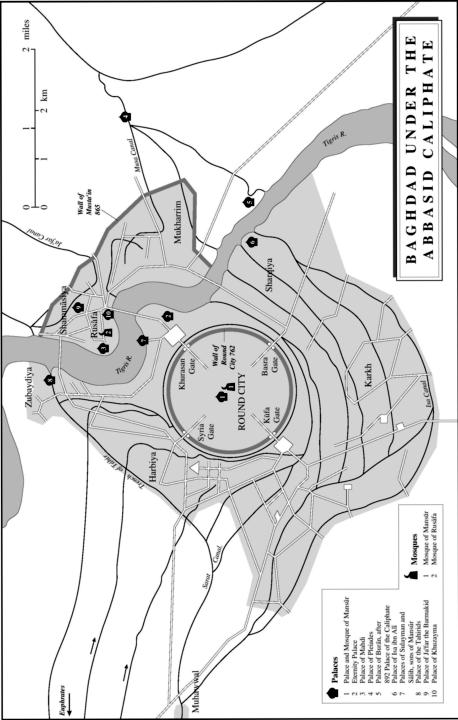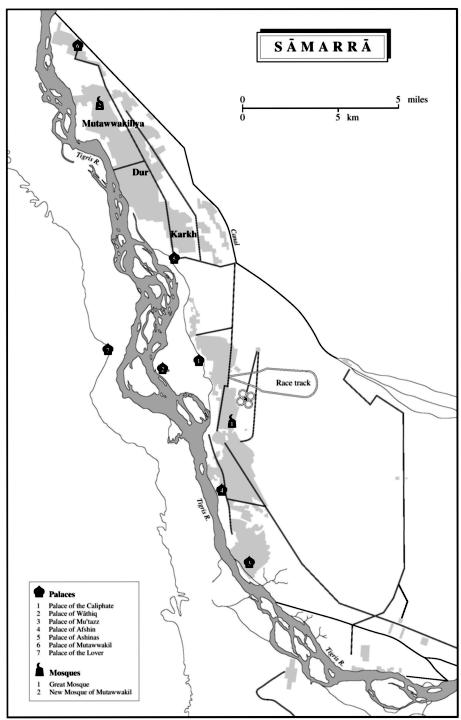




Contents
vi
ix
xv
xix
i
ii
Acknowledgements
It is a pleasure to acknowledge help and support from many colleagues and friends. I must first thank Judith Herrin who first suggested by name to Georgina Capel. It was Georgina's encouragement and support which persuaded me to undertake a book I had not previously thought of writing. I would also like to thank the team at Weidenfeld and Nicolson, especially Penny Gardiner whose editorial skills and enthusiasm helped so much, and Tom Graves for his work on the illustrations. I owe a great debt of gratitude to the translators of Tabari's History, whose readings have so often guided me through the text, to Julia Bray for fresh and witty translations of Arabic poetry, and Letizia Osti, who has helped me with her great understanding of classical Arabic prose and tenth-century court culture. I am very grateful to Rebecca Foote for sharing information about her excavations in Humayma and to Georgina Herrmann for making it possible for me to visit Merv. My thanks are also due to Helen and Robert Irwin for hospitality in London and long hours of fruitful conversation about aspects of orientalism. And finally my family who have, as ever, supported my absences, and absent-mindedness, with tolerance and good grace and to whom this book is lovingly dedicated.
Illustrations
Landscapes and cities
i. Humayma (Jordan): part of the remains of the home of the Abbasid family
2. Humayma: the reconstructed walls of a small mosque
3. The Gates of Asia
4. The Ancient Walls of Merv (Turkmenistan)
5. Merv
6. Baghdad (drawing by Lieutenant J. Fitzgerald, RN)
7. Basra (drawing by Lieutenant Colonel Estcourt of the 43rd Light Infantry)
8. Raqqa on the Euphrates
9. Tenth-century map of northern Iraq showing the Tigris and Euphrates
io. The dried-up bed of the great Nahrawan Canal
Palaces and mosques
ii. Ukhaydir (Iraq): the palace
12. Ukhaydir: the main court of the palace
13. Ukhaydir: upper gallery
14. Ukhaydir: audience hall
15. Samarra (Iraq): plan of the Abbasid city
16. Samarra: the Great Mosque (848-52) (outer walls)
17. Samarra: the Great Mosque (interior)
18. The Malwiya, the great spiral minaret of Mutawwakil's mosque
r9. Samarra: the gate of the palace of the caliphs
20. Samarra: two impressions of the palace of the caliphs by Ernst Herzfeld
21. Samarra: wall decoration from the palace of Muctazz (d. 869)
22. Samarra: mural showing two dancing girls pouring wine
23. Cairo: the mosque of Ibn Tulun
24. Cairo: the courtyard of the mosque of Ibn Tulun
People and objects
25. A mounted warrior from Penjikent, near Samarqand
26. Coins
a. Silver dirham of Haran (786-809)
b. Coin issued by Khalid the Barmakid in Tabaristan
c. The caliph Mutawwakil (847-61)
d. The caliph Muqtadir (908-32)
e. The caliph Muqtadir
f. The caliph Radi (934-40)
27. Linen fragment with inscription bearing the name of the caliph Muqtadir
28. An example of woven linen textiles produced by the Abbasid government workshops, ninth century
29. Silver gilt dish made in Tabaristan, late eighth century
30. Bronze aquamanile in the form of a falcon, made in Iran (796-7)
31. Bronze astrolabe, ninth century
The Legacy of the Abbasids
32. Patron, Musicians and Singers from a I219 manuscript of Isfahani's Book of Songs
33 The caliph Harun al-Rashid visits a bath house, Bihzad (i494)
34. a. Abbasid court style: an audience held by the Qajar ruler, Nasir al-Din Shah (1848-96)
b. Abbasid court style: the great curtain open, showing the shah on his throne
Map list
i. The Abbasid Caliphate
2. Baghdad under the Abbasid Caliphate
3. Samarra
4. The palace of Prince Muctazz, later Caliph, in Samarra, built 849-59
Timeline


Foreword
was by far the greatest political power in the Islamic world. But it was more than that; it was the continuation of that universal caliphate which had been established by Abu Bakr and his supporters immediately after the death of the Prophet Muhammad in 632, which was to continue in different guises and in different places down to the abdication of the last Ottoman caliph in 1925. In later centuries the caliphs were often purely ornamental figures with no power and little status, but in the three hundred years after 632 caliphs, first the four `Rightly Guided' caliphs, then from 661 the Umayyads and finally from 750 the Abbasids, exercised real power and leadership over the Muslim people. They embodied the unity of the Muslim community or umma. The court of the caliph established the style for all Muslim rulers, and the administrative systems they set up served as a model for all successor regimes.
This book is intended to tell the story of the Abbasid caliphs and their court in the two centuries that constituted their golden age. I use the word `story' deliberately. I have written a determinedly narrative history that concentrates on people and events. This is not because longer-term changes and social and economic factors are unimportant; clearly they are, and I have written about them elsewhere. But in the concern to make the history of the Islamic Middle East scientific and academically respectable we, and I mean here the small community of scholars who work on these subjects, have distrusted and avoided narrative, mere storytelling. In doing so, we have done ourselves and our subject no favours. For people coming from outside our specialized world we have made our field difficult, problematic and, yes, rather dull.

